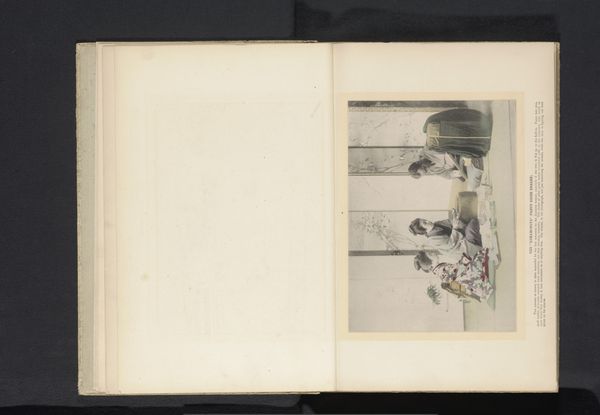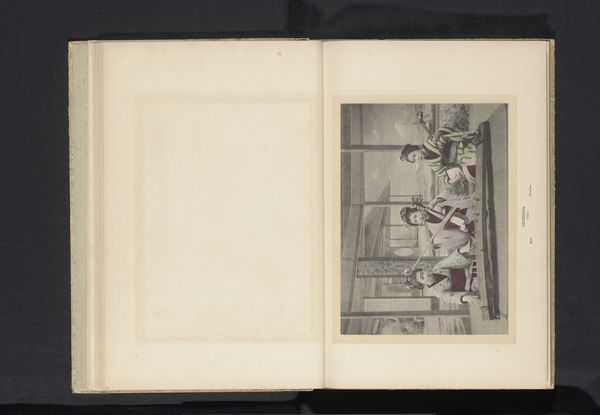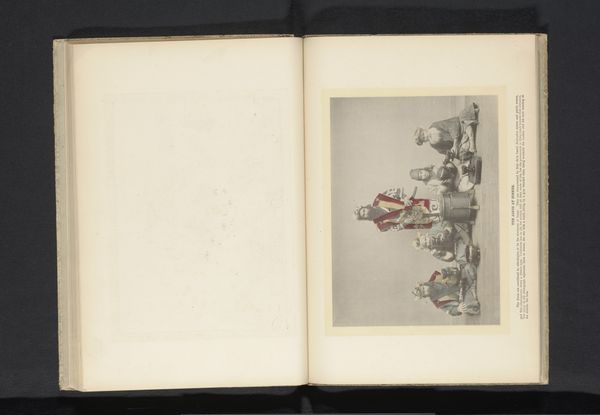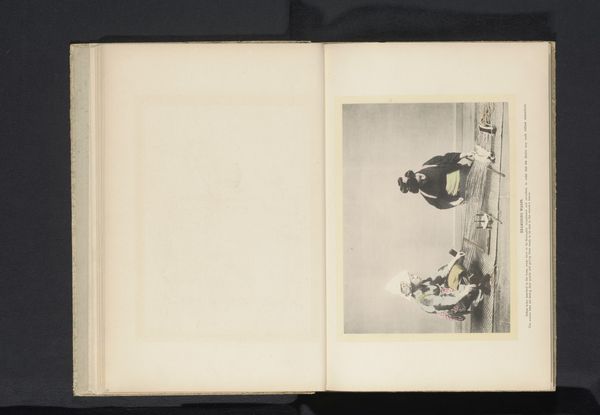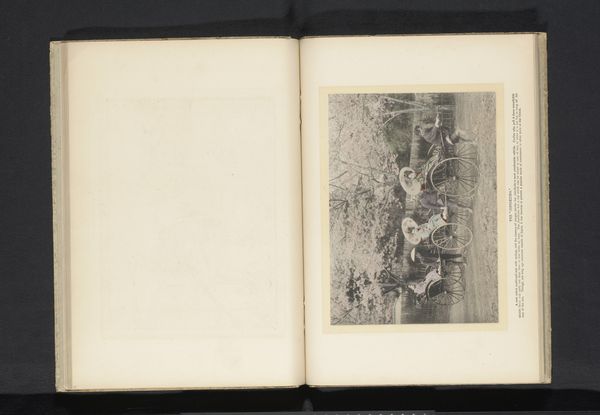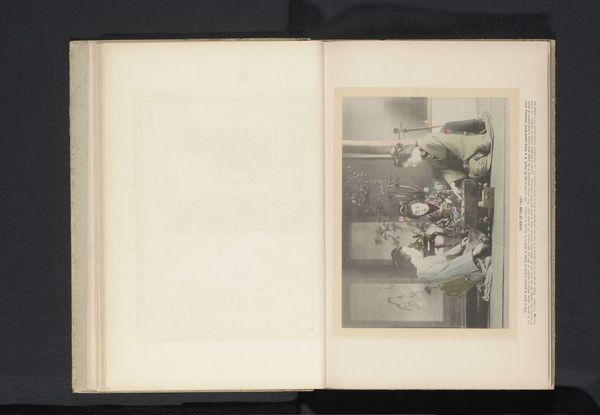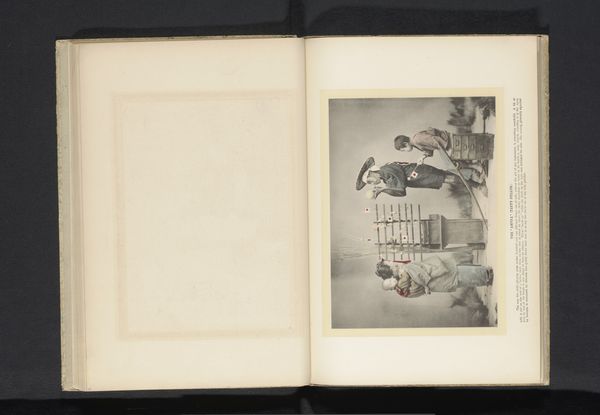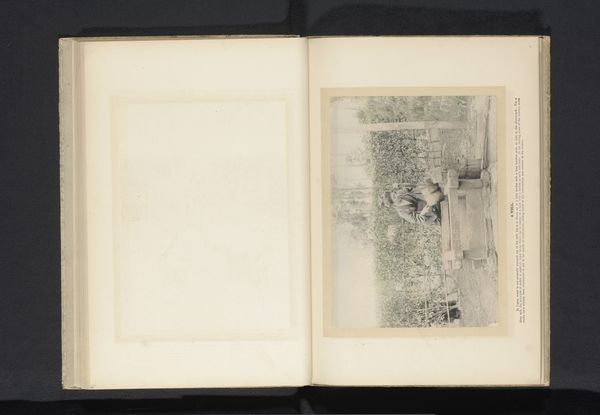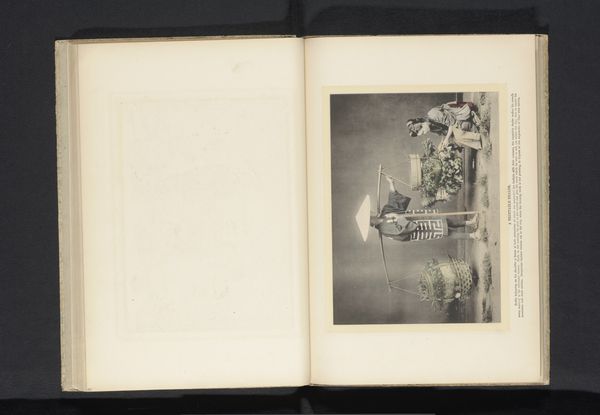
Dimensions: height 166 mm, width 230 mm
Copyright: Rijks Museum: Open Domain
Curator: We're looking at an intriguing print of a photograph. It’s titled "Drie jonge vrouwen drinken thee" which translates to “Three Young Women Drinking Tea,” dating to before 1900 and currently attributed to Anonymous. Editor: My first thought? An intimate glimpse into another time, but filtered, you know? Like observing through a historical lens layered with contemporary projection. Curator: Precisely! The piece immediately makes me think of the burgeoning photography and print industries in the late 19th century, particularly the market for exoticized, orientalist imagery geared toward Western consumers. Editor: Oh, without a doubt. I think, how do we interpret these portraits respectfully and critically now? This wasn't merely an objective depiction. There were specific gazes, socio-political agendas interwoven with colonial power dynamics at play when staging it and producing those prints on paper. Curator: Agreed. It’s vital we remember this was also a commodity. The paper, likely machine-made, became increasingly accessible which means more widespread circulation and, consequentially, the potential for varied receptions across social strata. Editor: And in what way do women become both symbols of domestic tranquility but, also simultaneously subjected to such public "consumption?” What power dynamics governed the photographic setting and influenced the young women and authorship we attribute to a nameless someone? It is these complicated dynamics in which cultural studies reveals complexities not otherwise exposed when we discuss aesthetics alone. Curator: Definitely. Studying such material output provides invaluable information when researching consumption. Did such photos, sold on cheap prints, foster understanding between East and West, or further perpetuate damaging stereotypes, by its mass distribution alone? Editor: I find it powerful to critically contextualize artwork from what otherwise appears aesthetically timeless. By addressing production, circulation, labor—the artist's touch reveals cultural and power at its most raw, thus fostering dialogue. Curator: Ultimately, this artwork allows one to unpack complexities related to labor, materiality and distribution in the making of exotic imageries. The photograph and the paper it sits on function as artifacts. Editor: Yes. This has definitely given me so much more to consider about photographic construction and circulating orientalized images within their colonial historical framework!
Comments
No comments
Be the first to comment and join the conversation on the ultimate creative platform.
